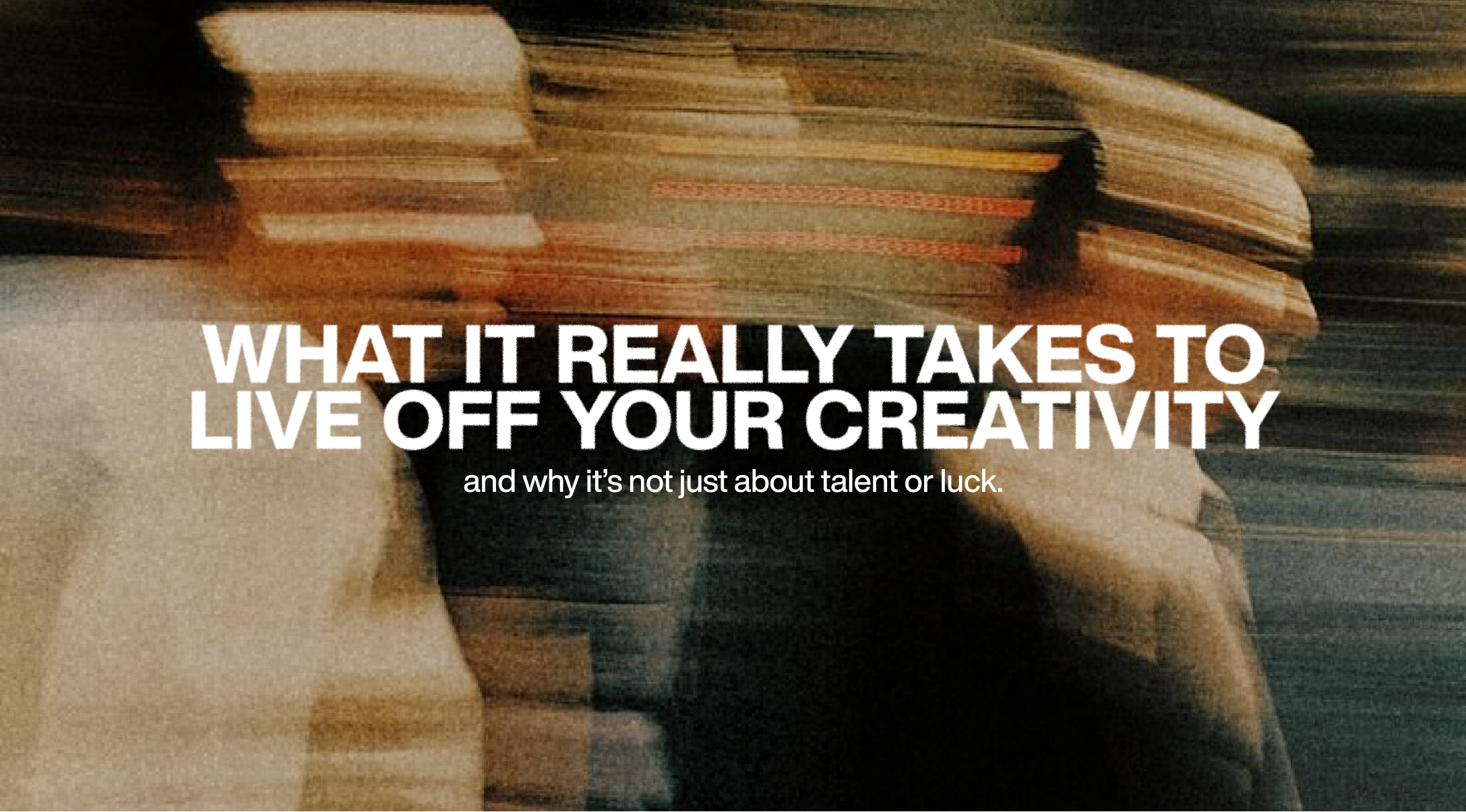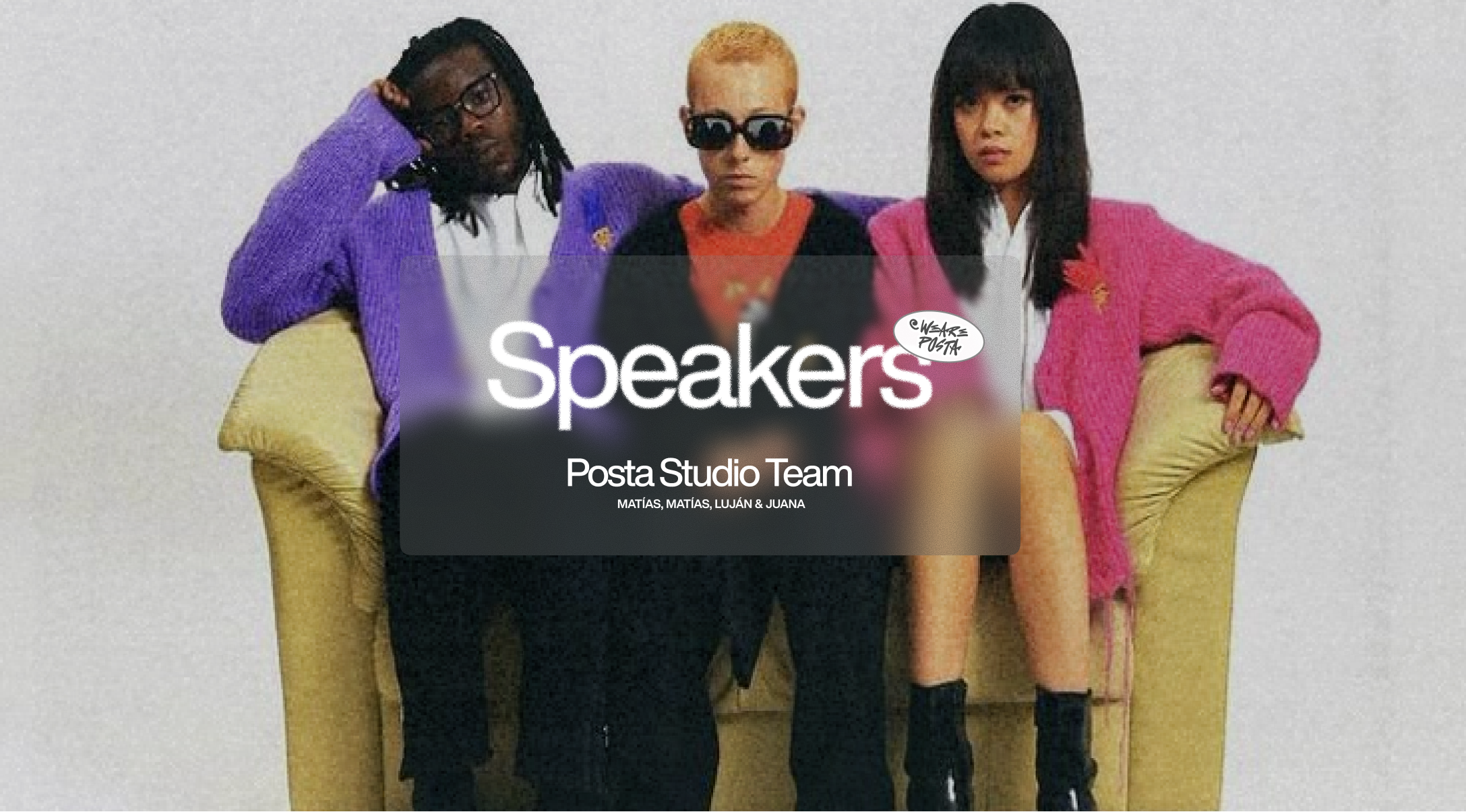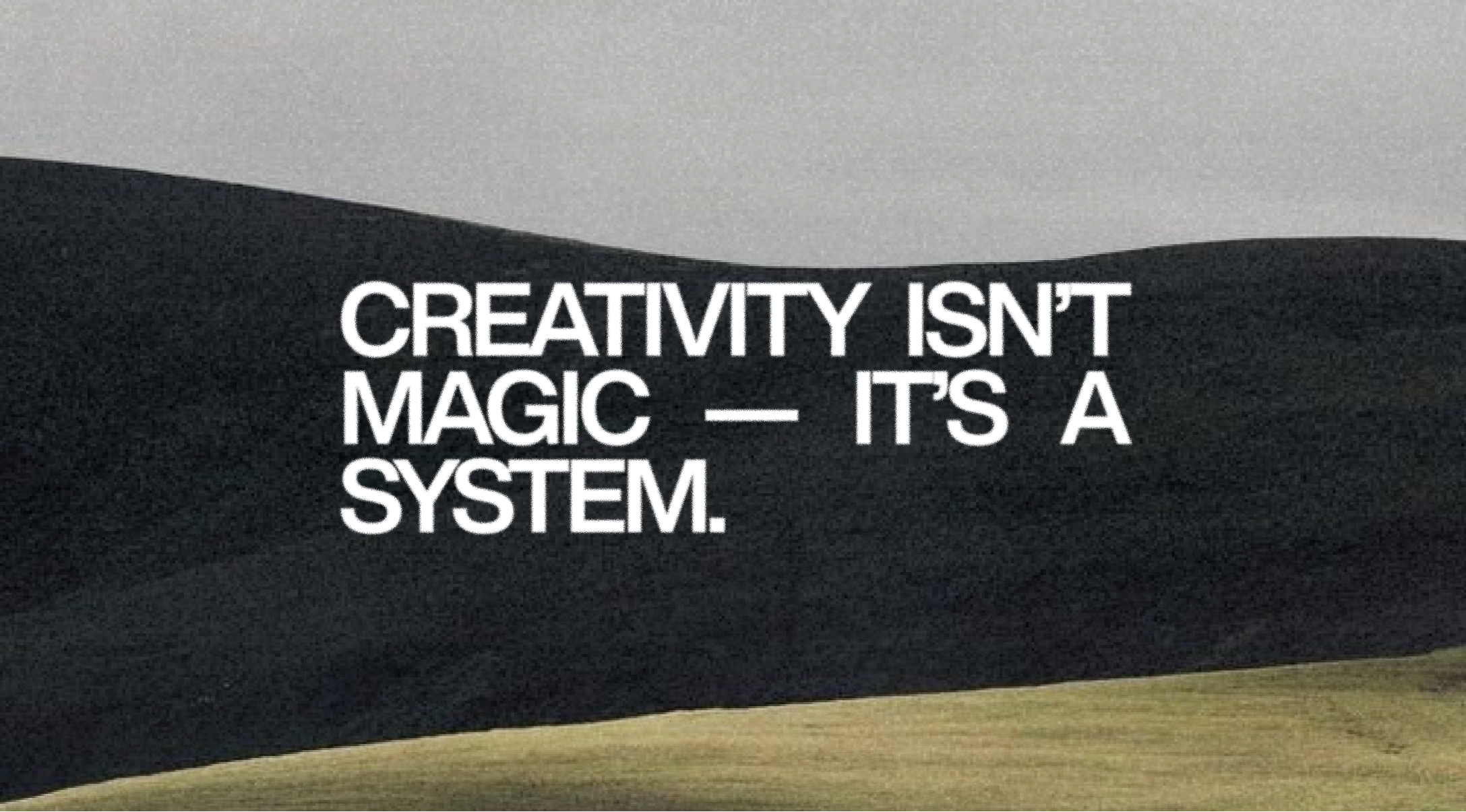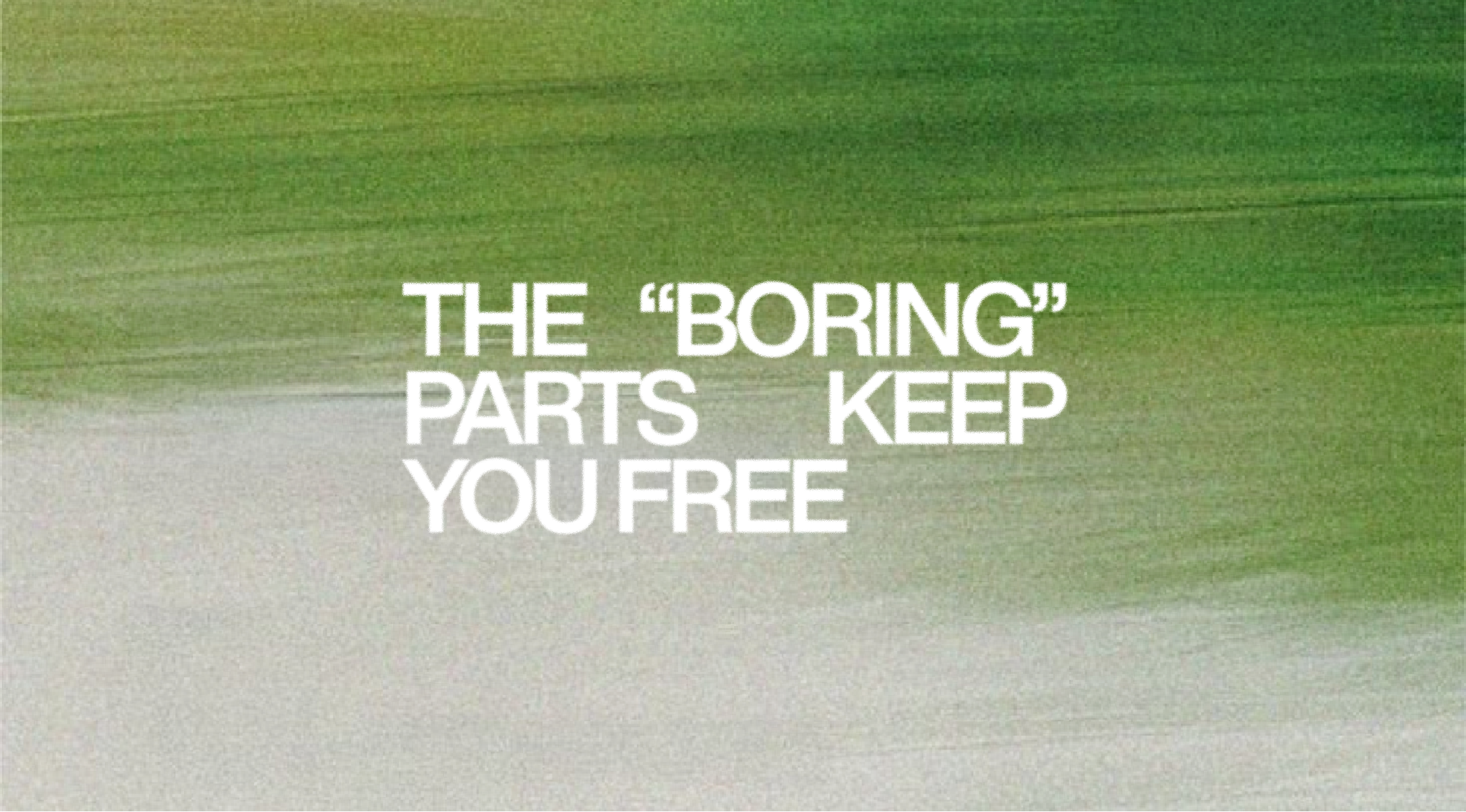

Everyone dreams about it: waking up and saying, “today I get to live from what I love.” But the truth is, turning creativity into a sustainable career isn’t just about passion or talent. It’s about clarity, structure, and the willingness to treat your creativity as more than a hobby—it’s a business, a practice, and a way of life.
Who’s speaking: Posta Studio Team — Matías, Matías, Luján & Juana

Before you think about clients, pricing, or strategy, you need to turn inward. Who are you? What do you want to build? And why does it matter? This “auto-scan” is the foundation. Without it, it’s easy to lose yourself chasing what’s trendy or what others expect.
Clarity on your identity and purpose doesn’t have to be fancy—it just has to be honest. The more you understand your own values, the more consistent your creative voice becomes, and the easier it is for people to connect with your work.
This is the hardest mental shift for many. Creativity feels like something personal, almost sacred. But if you want to make a living from it, you need to see it as your business. That doesn’t mean losing the passion—it means protecting it.
A business mindset helps you:
The “magic” of creativity doesn’t disappear when you learn how to invoice or set prices. In fact, it grows stronger—because now you have the stability to keep creating.

Talent without strategy burns out quickly. You need a framework that aligns your creativity with real-world opportunities. That means:
One of the best things you can do is work in quarters. Give yourself a small, clear goal every three months—launch a digital product, experiment with a new style, or collaborate with another studio. Strategy doesn’t kill spontaneity; it makes sure it has room to breathe.
No one gets excited about contracts, accounting, or taxes. But those are the foundations that keep your creative career safe.
Learning the basics of intellectual property, contracts, invoicing, and registration takes away the anxiety of “what if.” Instead of worrying about being underpaid or taken advantage of, you’ll have the tools to protect yourself and grow with confidence.
Think of it this way: the boring parts give you freedom to focus on the fun parts.

Your personal brand isn’t just a logo or a pretty feed. It’s how people talk about you when you’re not in the room. If you don’t define your positioning, the world will do it for you—and it might not reflect who you really are.
Positioning means deciding:
The clearer you are, the easier it becomes to attract the right clients and opportunities.
Undervaluing yourself is the fastest way to creative burnout. Pricing isn’t just about numbers—it’s about identity. When you set fair, consistent rates, you’re sending a message about the worth of your work and your time.
Tips that help:
Clients respect clarity. Being upfront about your rates isn’t arrogance—it’s professionalism.
Networking isn’t about collecting contacts; it’s about building meaningful relationships. One strong connection is worth more than a hundred weak ones.
Ways to approach it:
The right people don’t just open doors—they walk with you through them.
Your creativity thrives when vision, strategy, and action align. Vision without execution stays as fantasy. Execution without vision becomes noise.
At Posta, we like to build roadmaps: specific goals for the month, clear steps to reach them, and small metrics to track progress. For example: “Launch one service package, promote on three channels, and follow up with five potential clients.” Simple, measurable, and actionable.
This alignment is what turns creativity into sustainability.
Living from creativity doesn’t mean working 24/7. Burnout is real, and it kills more creative careers than lack of talent ever will.
Set boundaries. Create routines. Take care of your body and mind. Sometimes the most productive thing you can do for your creativity is step away from the desk. Inspiration needs space.
Your style, your taste, even your business model—they will change. And that’s not a weakness; it’s proof of growth.
Redesign your portfolio. Adjust your branding. Try new tools. What mattered to you three years ago might not resonate now, and that’s okay. Evolution is what keeps your work alive.
.png)
Living off your creativity is not a straight line. It’s a mix of passion and discipline, vision and spreadsheets, art and strategy. But when you commit to treating your creativity with the respect of a business and the care of a craft, you give yourself the best chance to not just survive—but thrive.
Because at the end of the day, talent opens the door, but structure keeps it from closing.